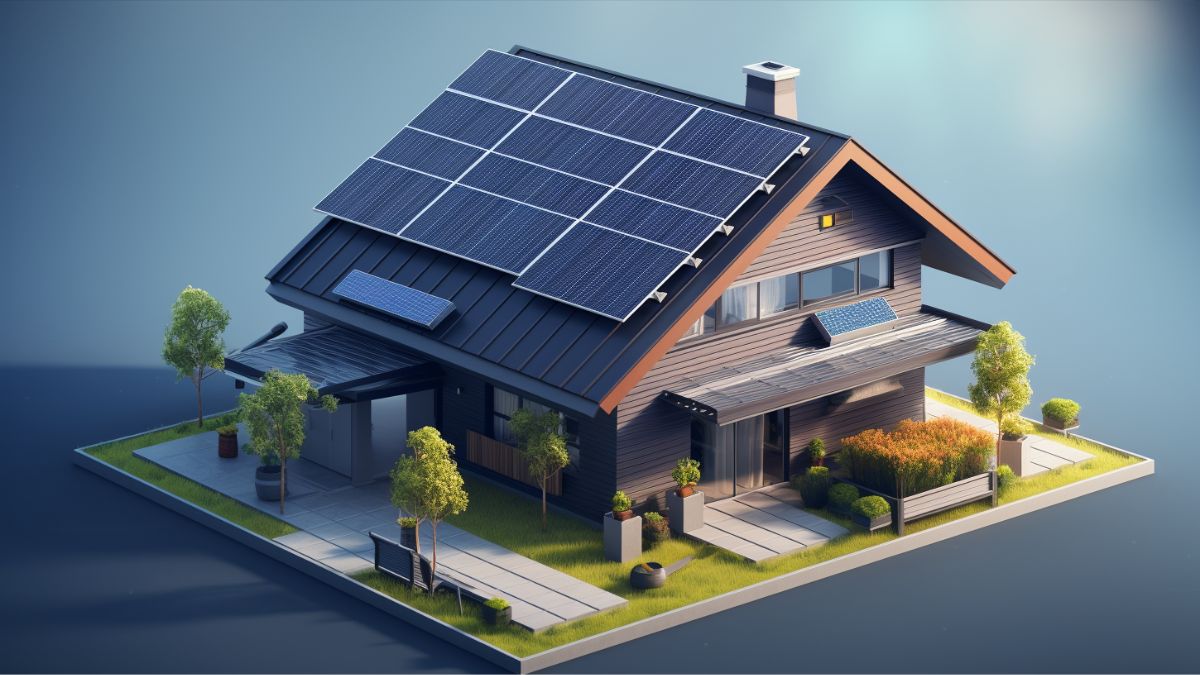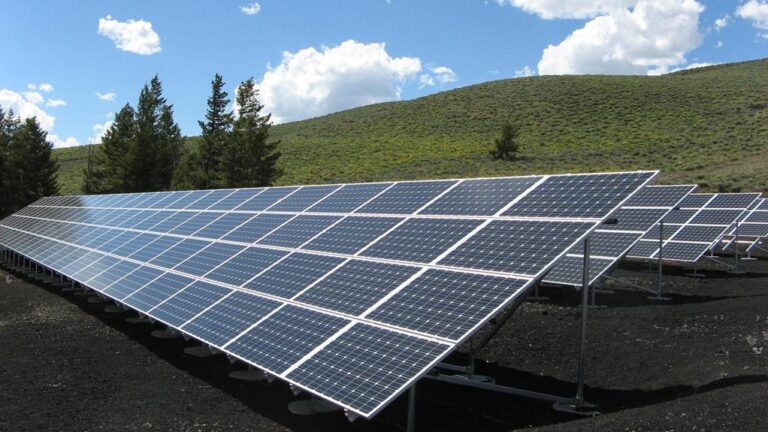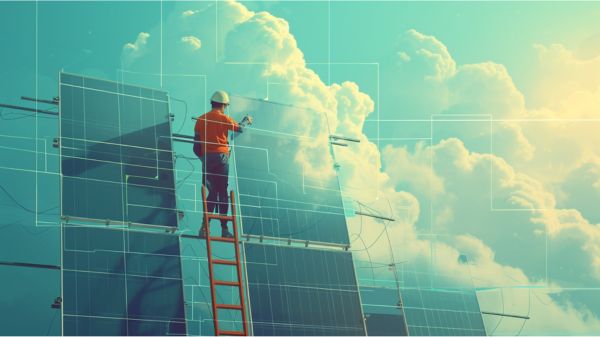The Economics of Solar Power Generation: The Ultimate Guide
Are you ready to unlock the secrets of solar power economics? Dive into our article and discover 15 essential tips that will help you master the financial aspect of solar power generation. From understanding the basics to maximizing energy efficiency, we’ve got you covered.
Assess the initial investment, evaluate the return on investment, and analyze the cost of energy. With our precise and informative guidance, you’ll be well-equipped to navigate the world of solar power and reap the benefits of this renewable energy source.
Key Takeaways
- Maximize efficiency and reduce costs by using high-quality panels, optimizing their placement and orientation towards the sun, and taking advantage of government incentives and rebates.
- Conduct a comprehensive evaluation of costs and benefits, including upfront costs, potential savings over time, and potential risks.
- Calculate the payback period and assess the long-term financial implications to determine the economic feasibility and profitability of implementing a solar power system.
- Consider energy-efficient practices, explore financing options such as lease agreements and crowdfunding, and monitor energy production and consumption in real-time.
Understanding the Basics
To understand the basics of solar power generation, you need to familiarize yourself with the key concepts and principles.
The first essential tip is maximizing efficiency. Solar panels convert sunlight into electricity, and maximizing efficiency means getting the most electricity from the available sunlight. This can be achieved by using high-quality panels and optimizing their placement and orientation towards the sun.
Another important aspect is reducing costs. Solar power has become increasingly affordable, but there are still ways to reduce costs further. One way is to take advantage of government incentives and rebates that can offset the initial investment. Additionally, choosing the right solar installation company can help you find cost-effective solutions tailored to your specific needs.
Assessing the Initial Investment
When assessing the initial investment for solar power generation, it’s crucial to conduct a cost vs. benefit analysis.
This analysis will help you determine the financial implications of implementing a solar power system in the long-term. By carefully evaluating the upfront costs and the potential savings over time, you can make an informed decision about the viability of solar power for your specific needs.
Cost Vs. Benefit Analysis
Assess the initial investment of solar power generation by conducting a cost vs. benefit analysis.
A thorough financial analysis is crucial in determining the viability of investing in solar power. A cost benefit evaluation allows you to weigh the upfront costs against the long-term benefits to determine the return on investment (ROI).
Start by calculating the installation costs, including solar panels, inverters, batteries, and installation fees. Consider any available incentives or tax credits that can offset these costs.
Next, estimate the savings from reduced or eliminated electricity bills and potential income from selling excess energy back to the grid.
Factor in maintenance and operational costs, such as cleaning and repairs.
Long-Term Financial Implications
By conducting a thorough cost vs. benefit analysis, you can assess the long-term financial implications of your initial investment in solar power generation. This step is crucial in your financial planning and risk management strategy.
A comprehensive evaluation of the costs and benefits associated with solar power generation will help you determine the viability and profitability of the investment over the long term. Consider factors such as the initial capital expenditure, ongoing maintenance and operational costs, expected energy savings, and potential revenue from selling excess electricity back to the grid.
Additionally, assess the potential risks, such as changes in government policies or technological advancements that may impact the return on investment.
Evaluating the Return on Investment
To evaluate the return on investment for solar power generation, you need to consider the cost versus the benefits. This involves conducting a financial viability analysis to determine if the project is economically feasible.
Additionally, calculating the payback period will help you understand how long it will take to recoup your initial investment through energy savings.
Cost Vs. Benefits
You need to evaluate the cost versus the benefits of solar power generation to determine your return on investment. Conducting a thorough cost analysis is essential to accurately assess the financial feasibility of installing solar panels.
Consider the upfront costs of purchasing and installing the panels, as well as ongoing maintenance and operational expenses. Take into account any applicable government incentives or tax credits that can offset these costs.
On the benefits side, calculate the amount of electricity your solar panels are expected to generate over their lifespan and compare it to the cost savings you’d enjoy by not relying solely on grid electricity. Additionally, factor in any potential income from selling excess electricity back to the grid.
Financial Viability Analysis
Evaluate the return on investment for your solar power generation project by conducting a financial viability analysis that takes into account the cost versus benefits and factors in potential government incentives and tax credits.
A financial analysis is crucial to determine if your project is economically viable and worth pursuing. Consider the initial investment costs, including equipment, installation, and maintenance. Assess the potential benefits, such as energy savings and revenue from selling excess power back to the grid.
Additionally, investigate any government incentives or tax credits available for solar power projects. These can significantly impact the financial viability of your project.
It’s essential to thoroughly evaluate all these factors to ensure the project’s viability and to determine if it aligns with your financial goals and objectives.
Payback Period Calculation
By calculating the payback period, you can determine the amount of time it will take to recoup your initial investment in a solar power generation project. This is a crucial step in evaluating the financial viability of the project. The payback period is calculated by dividing the initial investment by the annual cash flows generated by the project. The shorter the payback period, the quicker you will recover your investment. To optimize the payback period, you can employ various calculation methods such as the simple payback period, discounted payback period, or net present value. These methods take into account factors like project costs, electricity generation, operational expenses, and tax incentives. By analyzing the payback period, you can make informed decisions about the financial feasibility of your solar power generation project.
| Method | Calculation | Advantages |
|---|---|---|
| Simple Payback Period | Initial Investment / Annual Cash Flows | Easy to calculate and understand |
| Discounted Payback Period | PV of Initial Investment / Annual Cash Flows | Accounts for time value of money and future cash flows |
| Net Present Value | PV of Cash Inflows – PV of Cash Outflows | Considers the profitability of the project over its lifespan |
Analyzing the Cost of Energy
To accurately assess the cost of energy in solar power generation, it’s crucial to analyze the overall expenses involved in the process. This involves conducting a cost estimation that considers factors such as equipment costs, installation expenses, maintenance and operation costs, as well as any financing or incentive options available.
By carefully evaluating these expenses, you can determine the financial feasibility of implementing solar power generation and identify potential energy savings. Additionally, it’s important to consider the long-term benefits of solar power, such as reduced reliance on fossil fuels, lower carbon emissions, and potential savings on electricity bills.
Maximizing Energy Efficiency
To maximize energy efficiency in solar power generation, it’s crucial to focus on two key factors:
- Efficient solar panel design: By optimizing the design of solar panels, you can ensure that they capture and convert sunlight into electricity more effectively. This includes factors such as the type and quality of solar cells used, the arrangement and orientation of panels, and the use of tracking systems to follow the sun’s path throughout the day.
- Smart energy consumption: In addition to improving solar panel design, implementing strategies to consume energy smartly can help maximize the overall efficiency of the solar power system. This includes using energy-efficient appliances that minimize electricity consumption, implementing effective energy management systems to monitor and regulate energy usage, and adopting energy-saving practices such as turning off lights and appliances when not in use.
Efficient Solar Panel Design
When designing your solar panel system, it’s important to prioritize energy efficiency in order to maximize your power generation. To achieve efficient solar panel installation and improve solar panel efficiency, consider the following tips:
- Optimize panel orientation and tilt angle: Position your panels to face the sun directly and adjust the tilt angle to maximize sunlight absorption.
- Use high-quality materials: Invest in top-notch solar panels and components that are known for their durability and efficiency.
- Implement effective shading solutions: Minimize shading from nearby structures or vegetation by strategically placing your panels and utilizing shading analysis tools.
By following these guidelines, you can ensure that your solar panel system is designed to operate at its highest efficiency, resulting in increased power generation and long-term cost savings.
Smart Energy Consumption
How can you maximize energy efficiency and achieve smart energy consumption in your solar power system?
One key aspect is implementing smart energy monitoring and conducting regular energy consumption analysis.
Smart energy monitoring involves the use of advanced technologies to track and analyze energy usage in real-time. By monitoring your solar power system’s energy production and consumption, you can identify areas of inefficiency and make necessary adjustments.
Energy consumption analysis allows you to evaluate patterns and trends in your energy usage, enabling you to identify opportunities for optimization. Through these practices, you can identify energy-saving measures, such as adjusting usage patterns or upgrading equipment, to maximize the efficiency of your solar power system.
Exploring Financing Options
Consider using various financing options to maximize the economic benefits of solar power generation. When exploring financing options, you have two attractive choices: lease agreements and crowdfunding opportunities.
- Lease Agreements: By entering into a lease agreement, you can avoid the upfront costs of purchasing a solar power system. Instead, you pay a fixed monthly fee to the system owner, allowing you to benefit from solar energy without the burden of ownership. This option is ideal if you want to minimize your initial investment and still enjoy the cost savings of solar power.
- Crowdfunding Opportunities: Crowdfunding platforms provide an innovative way to finance your solar project. By pooling together investments from a large number of individuals, you can raise the necessary funds to install a solar power system. This option not only spreads the financial risk but also allows individuals to contribute to the development of clean energy.
Exploring these financing options can make solar power generation more accessible and affordable, empowering you to join the sustainable energy revolution.
Considering Government Incentives
To maximize the economic benefits of solar power generation, it is important to take advantage of the government incentives available. These incentives can significantly reduce the upfront costs of installing solar panels and help you recoup your investment more quickly. By understanding and leveraging these financial incentives, you can make your solar power project even more financially viable.
To help you navigate through the various government incentives, here is a table summarizing some of the key programs and benefits in place:
| Government Incentive | Description |
|---|---|
| Federal Investment Tax Credit (ITC) | Offers a 26% tax credit on the cost of installing solar panels. |
| State and Local Incentives | Many states and local jurisdictions offer additional financial incentives, such as grants, rebates, or low-interest loans. |
| Net Metering | Allows you to sell excess electricity back to the grid, reducing your overall energy costs. |
Factoring in Maintenance and Repairs
To ensure the long-term economic viability of your solar power project, it’s essential to factor in regular maintenance and repairs. Neglecting these aspects can lead to higher maintenance costs and repair expenses in the future. Here are three key considerations when it comes to maintenance and repairs:
- Scheduled Inspections: Regular inspections by qualified technicians are crucial to identify any potential issues or areas that require maintenance. These inspections help prevent major breakdowns and ensure optimal performance.
- Cleaning and Panel Maintenance: Proper cleaning and maintenance of solar panels is important to maximize their efficiency. Regular cleaning removes dirt, dust, and debris that can hinder the absorption of sunlight, thereby reducing energy output.
- Inverter Maintenance: Inverters are critical components of solar power systems. Regular maintenance and servicing of inverters help to ensure their longevity and efficiency. This includes checking for any faults, cleaning or replacing parts if needed, and monitoring performance.
Calculating the Payback Period
To accurately calculate the payback period of a solar power system, you must consider various factors such as the initial cost, installation expenses, and ongoing operational costs. Accurate calculations are crucial in determining the time it takes for the system to generate enough savings to cover its upfront expenses.
Shortening the payback period can be achieved through strategies like maximizing energy production, optimizing system efficiency, and taking advantage of financial incentives and tax credits.
Factors Affecting Payback Period
Calculating the payback period involves considering various factors that affect the economic viability of solar power generation. To conduct a thorough payback period analysis and assess the economic feasibility of a solar project, you need to take into account the following factors:
- Initial investment: The cost of installing solar panels and other necessary equipment.
- Energy production: The amount of electricity the solar system can generate over its lifetime.
- Energy consumption and savings: The amount of electricity consumed and the savings achieved by using solar power.
By analyzing these factors, you can determine how long it will take for the solar project to generate enough savings to recover the initial investment.
Understanding the factors affecting the payback period is crucial for making informed decisions and maximizing the economic benefits of solar power generation.
Importance of Accurate Calculations
Accurate calculations play a crucial role in determining the payback period for solar power generation. By conducting precise calculations, you can accurately estimate the time it takes to recoup your initial investment and start reaping the benefits of solar power.
Calculating the payback period involves considering various factors, such as the cost of installation, financing options, government incentives, and estimated energy savings. Accurate calculations ensure that you have a clear understanding of the financial viability of your solar power project.
Strategies to Shorten Payback
Maximize your solar power investment by implementing strategies that shorten the payback period. By shortening the payback period, you can increase your savings and start reaping the benefits of solar power sooner.
Here are three effective strategies to consider:
- Optimize system size: Determine the optimal size of your solar system by analyzing your energy consumption patterns and future needs. A system that’s sized just right will generate enough electricity to meet your needs without overspending on unnecessary capacity.
- Take advantage of incentives: Research and take advantage of available government incentives, such as tax credits and grants, to offset the upfront costs of installing solar panels. These incentives can significantly reduce your initial investment and shorten the payback period.
- Explore financing options: Consider financing options like solar loans or power purchase agreements (PPAs) that allow you to spread out the cost of your solar system over time. This can help you avoid a large upfront payment and start saving on your electricity bills immediately.
Managing Solar Power Risks
To effectively mitigate solar power risks, you must prioritize risk assessment and implement proactive strategies. Managing project risks and mitigating financial risks are crucial to the success of any solar power generation project. By identifying potential risks and developing strategies to address them, you can minimize the impact on your investment and ensure the long-term viability of your solar power system.
To help you manage solar power risks effectively, consider the following key factors:
| Risk Factor | Proactive Strategy |
|---|---|
| Weather-related events | Install backup power systems or incorporate energy storage |
| Equipment failure | Regular maintenance and monitoring |
| Regulatory changes | Stay updated on policy and regulations |
Incorporating Battery Storage
To effectively address the risk of weather-related events and equipment failure and stay prepared for regulatory changes, you can incorporate battery storage into your solar power system. This allows you to store excess energy generated during peak sunlight hours and use it during times of low or no sunlight.
Here are three key benefits of incorporating battery storage:
- Enhanced Reliability: With battery storage, you can ensure a continuous supply of electricity even during power outages or grid disruptions. This is particularly crucial for critical applications such as hospitals or data centers.
- Grid Independence: Battery technology advancements enable you to reduce your reliance on the grid by storing excess energy for later use. This not only provides energy security but also reduces your electricity costs.
- Grid Integration Challenges: Integrating battery storage with solar power systems can present challenges such as managing power flow and ensuring compatibility with existing grid infrastructure. However, advancements in battery technology are addressing these challenges, making grid integration smoother and more efficient.
Leveraging Net Metering
Leverage net metering to optimize the economics of your solar power generation.
Net metering is a billing arrangement that allows solar power system owners to receive credit for the excess electricity they generate and send back to the grid. By taking advantage of net metering benefits, you can offset your electricity costs and potentially earn credits for future use.
However, it’s important to understand the net metering regulations in your area. Different regions have varying rules regarding eligibility, credit rates, and system size limits. Familiarize yourself with these regulations to ensure you can fully leverage the benefits of net metering.
Understanding Solar Power Tariffs
Continue optimizing the economics of your solar power generation by understanding the solar power tariffs in your area. Solar power tariffs refer to the rates at which electricity generated from solar panels is purchased by the utility company. It’s important to understand these tariffs as they can have a significant impact on the financial viability of your solar power project.
Here are three key points to consider:
- Government regulations: Solar power tariffs are often determined by government regulations, which vary from country to country and even within different regions. Familiarize yourself with the specific regulations in your area to ensure compliance and maximize the benefits.
- Feed-in tariffs: Some areas offer feed-in tariffs, which allow solar power system owners to sell excess electricity back to the grid at a predetermined rate. This can provide a steady income stream and help offset the initial investment costs.
- Time-of-use tariffs: In certain regions, electricity rates may vary based on the time of day. Understanding these time-of-use tariffs can help you optimize your solar power generation by aligning it with periods of higher electricity demand and higher rates.
Monitoring and Optimizing Performance
Maximize the economic benefits of your solar power generation by closely monitoring and optimizing its performance.
Monitoring your solar power system is crucial to ensure it operates at its maximum potential. By continuously monitoring its performance, you can identify any issues or inefficiencies that may arise and take prompt action to address them.
Regular performance optimization is essential to maximize the energy output and overall efficiency of your solar panels. It involves various techniques such as regular cleaning and maintenance, ensuring proper alignment and tilt of the panels, and monitoring the temperature and shading.
Planning for Future Expansion
To ensure future growth and scalability of your solar power generation, prioritize planning for expansion. By carefully considering future scalability, you can effectively address the infrastructure requirements necessary to accommodate your growing energy needs.
Here are three key considerations to keep in mind:
- Evaluate power output: Assess your current power output and project future demand to determine the capacity needed for expansion. This will help you plan for additional solar panels and inverters, ensuring that your system can handle increased energy production.
- Assess grid integration: As you expand your solar power generation, it’s crucial to evaluate the integration of your system with the grid. This includes understanding any potential grid limitations and ensuring that your infrastructure can handle the increased power flow.
- Anticipate storage requirements: As your solar power generation expands, the need for energy storage may arise. Assessing your storage requirements in advance will help you plan for the installation of batteries or other storage solutions, ensuring seamless integration with your expanded solar infrastructure.
Conclusion
Congratulations on completing the journey through mastering the economics of solar power generation! Armed with these 15 essential tips, you’re well-equipped to navigate the intricacies of assessing initial investments, evaluating returns, and maximizing energy efficiency.
Remember, knowledge is power, and by understanding solar power tariffs, monitoring performance, and planning for future expansion, you hold the key to a brighter and more sustainable future.
So, go forth and shine like a supernova in the world of solar power economics!







One Comment
Comments are closed.